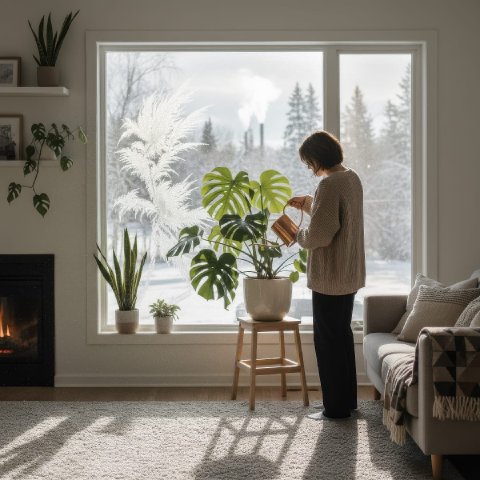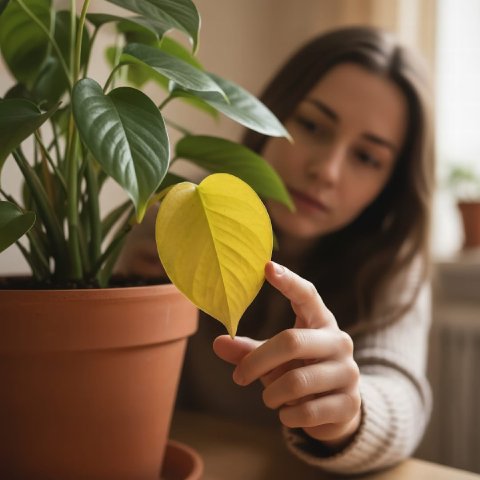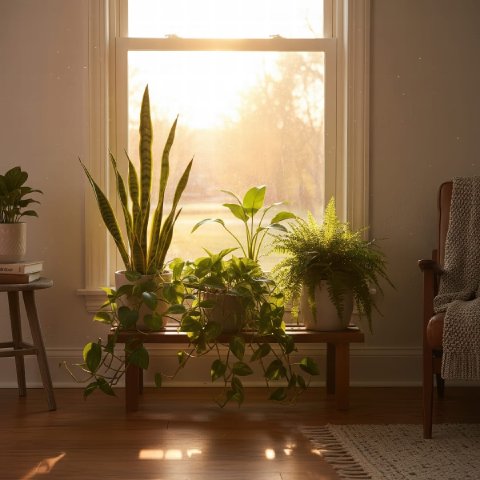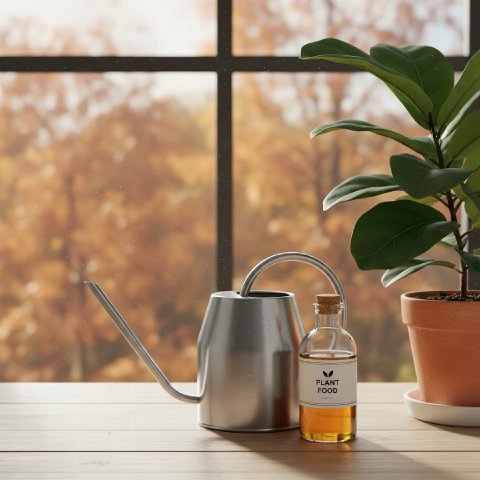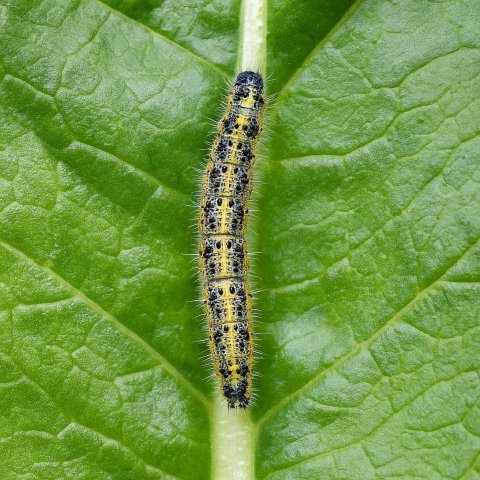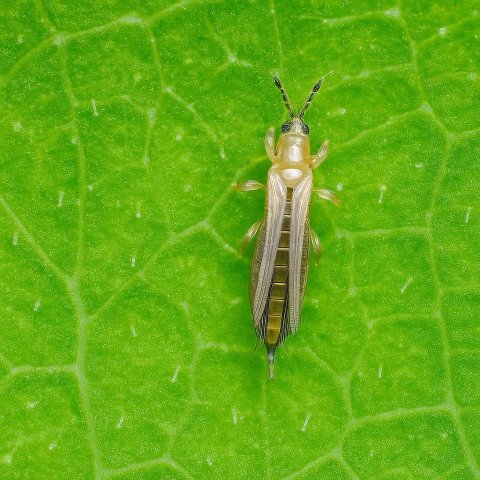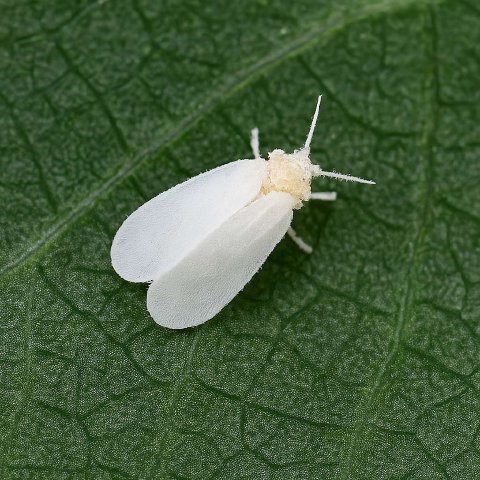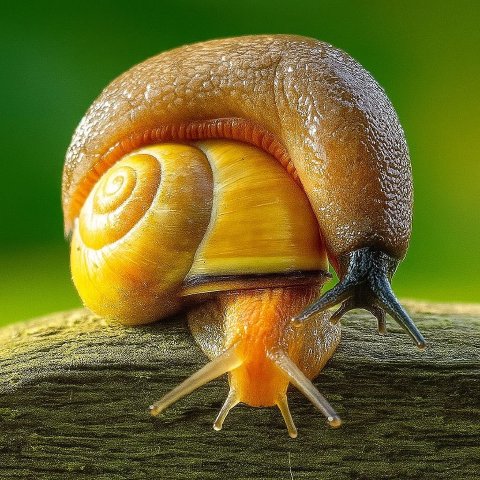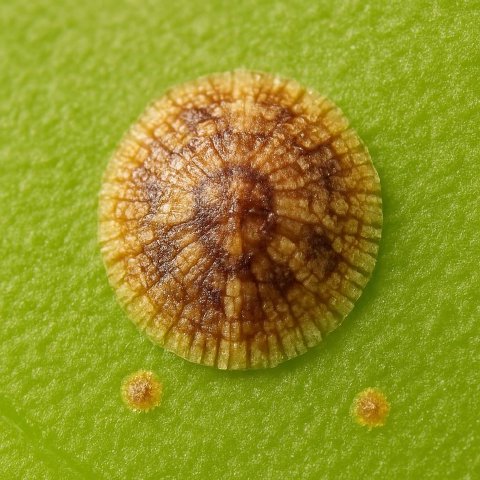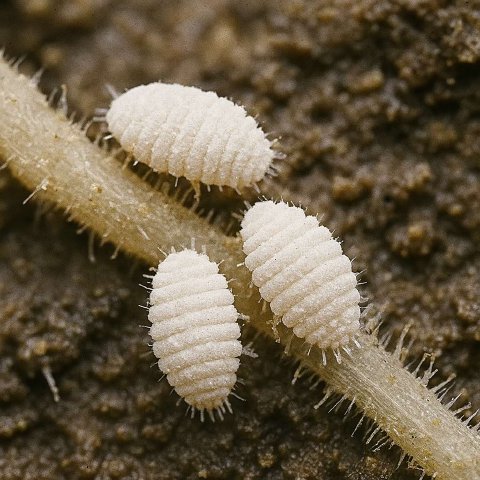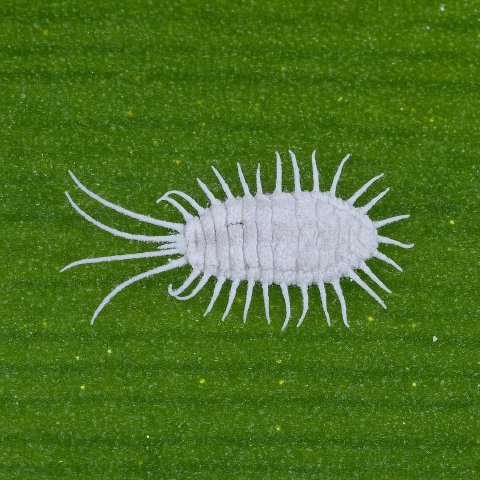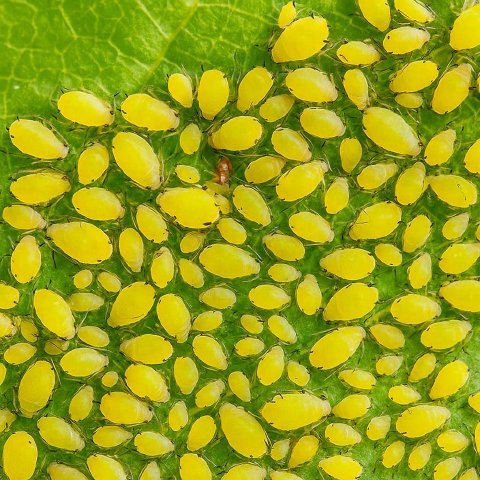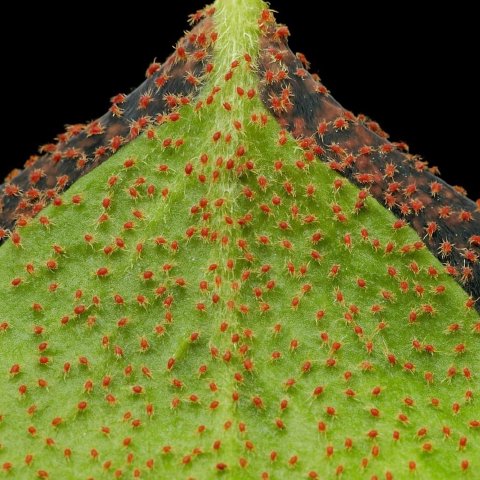🪴 In This Guide 🪴
🕷️ Spider Mites: The Dry-Air Troublemakers
Spider mites are almost invisible at first. You might only notice tiny pale dots on leaves or thin webbing between stems. They love warm, dry air and multiply rapidly when humidity drops below 40%.
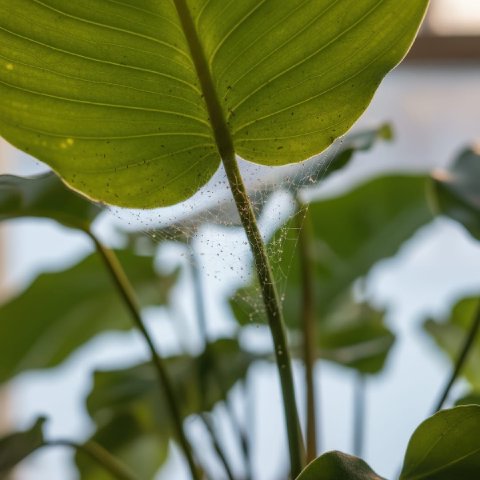
How to deal with them:
- Check regularly. Look under leaves with a magnifying glass or your phone camera. Early detection makes all the difference.
- Wipe and rinse. Gently clean the leaves with a damp cloth or give them a lukewarm shower to wash mites away. Repeat weekly until clear.
- Raise humidity. Spider mites dislike moist air. Group plants together or run a humidifier to create less favorable conditions.
- If they persist: Use insecticidal soap or neem-based spray. Always test on one leaf before applying widely.
👉 Related: Spider Mites
🪰 Fungus Gnats: The Damp-Soil Flyers
If you’ve noticed small black flies hovering around your pots, those are fungus gnats. The adults are harmless but annoying; their larvae feed on roots when soil stays too wet.

How to stop them:
- Let soil dry between waterings. Most larvae die if the top inch of soil dries out.
- Bottom-water instead. It hydrates roots while keeping the surface dry.
- Use sticky traps. Yellow traps catch adults and help monitor infestations.
- Try biological solutions. Bacillus thuringiensis israelensis (BTI) or beneficial nematodes target larvae naturally and safely.
👉 Learn more: Fungus Gnats
🔁 Preventing a Repeat
The best pest prevention happens before pests appear.
Keep leaves dust-free, avoid soggy soil, and maintain moderate humidity.
If you reuse pots or tools, wash them with warm, soapy water.
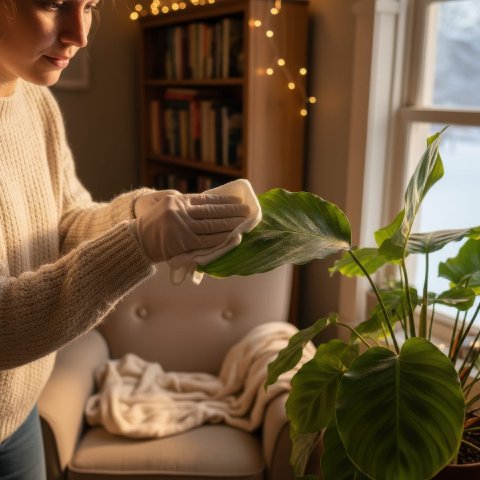
When bringing new plants home, give them a two-week quarantine before adding them to your collection.
A little patience here can save your entire shelf later.
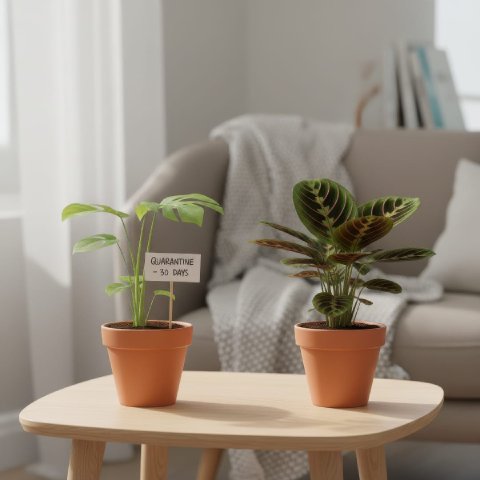
Pests in winter aren’t a disaster-they’re just a sign of imbalance.
Once you adjust humidity, airflow, and watering, your plants (and your sanity) will recover quickly.
📚 Related Reading
For a complete seasonal overview, check out our Winter Houseplant Care Checklist.
You might also like:






